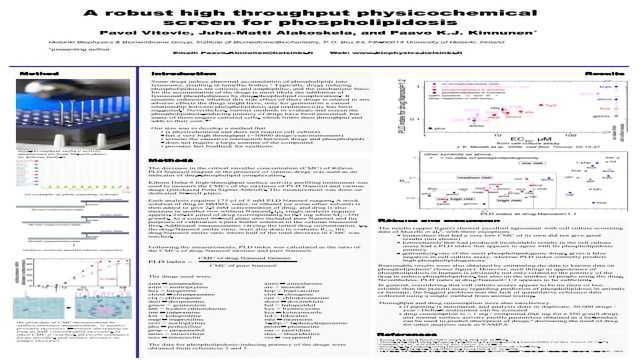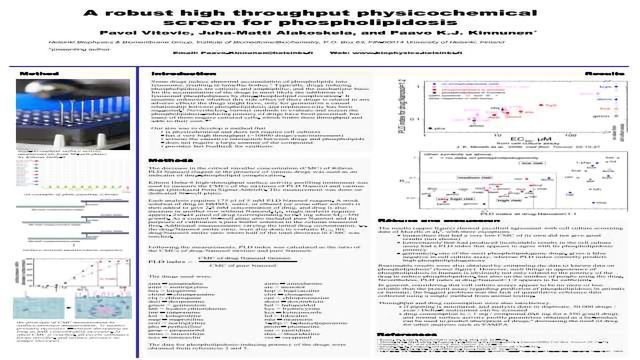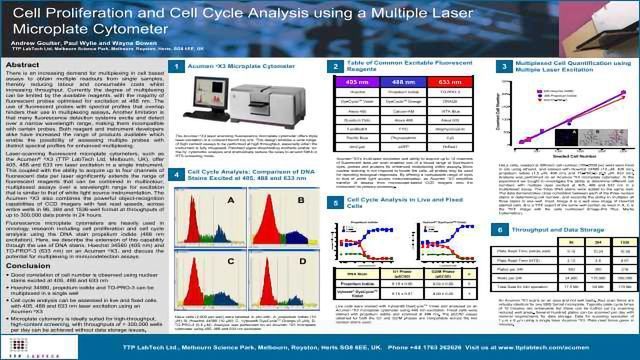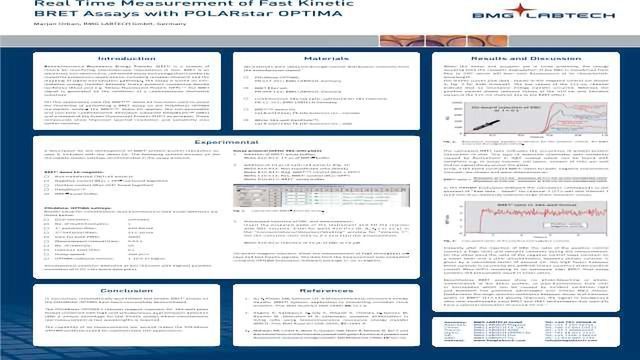Latest Posters

Poster
PRIMe: Platform for RIKEN Metabolomics
We have developed a web-based database, "PRIMe (Platform for RIKEN Metabolomics)," which contains powerful tools for researchers to analyze gene co-expression data and mass spectral data. PRIMe has been developed with the main aim of facilitating integrated analysis for transcriptomics and metabolomics.

Poster
Glycoprotein Labeling and Detection: Novel Click Chemistry-based Applications for gel Electrophoresis, Flow Cytometry and Fluorescence Microscopy
We demonstrate highly-selective and sensitive labeling methods for the detection of specific glycoprotein subclasses, including cell surface N- and O-linked glycoproteins and intracellular O-GlcNAc modified proteins, utilizing the copper-catalyzed cycloaddition reaction between azides and alkynes, or click chemistry.

Poster
Design, Manufacturing and Test of Disposable Microfluidic System for Blood-Plasma Separation
Prenatal diagnosis to determine the outcome of pregnancies and detect conditions that may affect future pregnancies has risen as a big issue in the broad public. Analysis of fetal genetic material extracted from maternal blood is a smart alternative to invasive prenatal testing.

Poster
Proteomic Profiling in Defining Chemoresistant Breast Cancer
This study aims to identify protein profiles in breast cancer cells as predictors of chemoresistance by using two-dimensional gel electrophoresis and MALDI-TOF peptide mass fingerprinting. Our findings provide further insights into the complex mechanisms of chemoresistance, as well as representing an attractive starting point for the identification of potential protein biomarkers to predict response to chemotherapy in breast cancer in vivo.

Poster
A Robust High Throughput Physicochemical Screen for Phospholipidosis
The poster presents a simple HT physicochemical screen, predicting PLD in real-time by surface activity profiling (using Kibron Delta-8 analyzer). The results are equal or better than derived from a cell based assay, throughput is up 450 compounds/24 hrs and drug consumption < 1 mg/compound.

Poster
A Robust High Throughput Physicochemical Screen for Phospholipidosis
The poster presents a simple HT physicochemical screen, predicting PLD in real-time by surface activity profiling (using Kibron Delta-8 analyzer). The results are equal or better than derived from a cell based assay, throughput is up 450 compounds/24 hrs and drug consumption < 1 mg/compound.

Poster
High Throughput Screening with Infectious Agents: Equipment Choices and Strategies
At Southern Research Institute we routinely conduct HTS campaigns using infectious agents at the BSL-2 (Biosafety Level) and BSL-3 level. Here we discuss how we have successfully screened over one million compounds in anti-viral (Severe Acute Respiratory Syndrome, Influenza, Highly Pathogenic Avian Influenza) and anti-microbial (Staphylococcus aureus, Escherichia coli, Mycobacterium tuberculosis) screens in BSL-2 and BSL-3 containment.

Poster
Cell Proliferation and Cell Cycle Analysis using a Multiple Laser Microplate Cytometer
Fluorescence microplate cytometers are heavily used in oncology research including cell proliferation and cell cycle analysis using the DNA stain propidium iodide (488 nm excitation). Here, we describe the extension of this capability through the use of DNA stains, Hoechst 34580 (405 nm) and TO-PRO®-3 (633 nm) on an Acumen eX3, and discuss the potential for multiplexing in immunodetection assays.

Poster
Simultaneous Dual Emission Detection for Fast Kinetic BRET Assays
Bioluminescence Resonance Energy Transfer (BRET) is a system for monitoring intermolecular interactions in vivo. The BRET2™ demo kit has been used to prove the feasibility of performing a BRET assay on the POLARstar OPTIMA microplate reader. The POLARstar OPTIMA’s internal reagent injectors for 384-well plate format combined with high-end simultaneous dual emission detection offer a unique advantage for fast kinetic assays where simultaneous emission detection at two wavelengths is required.

Poster
Promega’s Multiplexed Luciferase Reporter and Cell Viability Assays performed on the PHERAstar
By multiplexing a reporter assay (EnduRen™, ViviRen™) with a cell viability assay (CellTiter-Glo®), it is possible to determine if reporter response variations are due to changes in cell number and health. In this poster, we demonstrate the combination of several Promega cell-based assays multiplexed in both low-volume 384- and 1536-well plate formats using the BMG LABTECH PHERAstar microplate reader to record luminescence.
Advertisement



